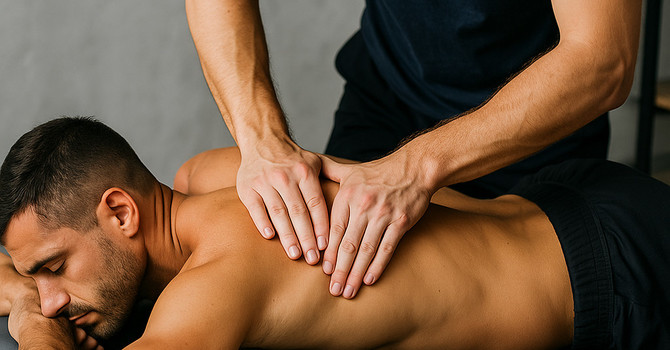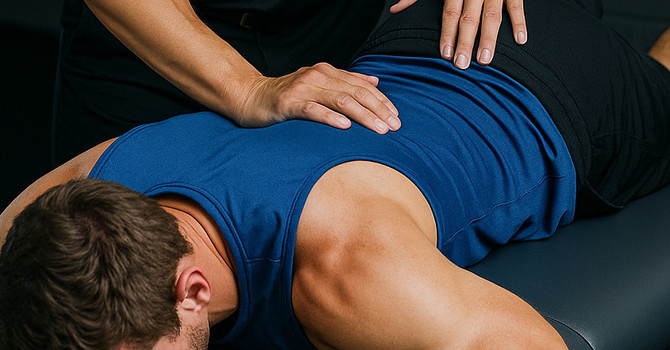Have you ever experienced persisting pain that is throbbing or pounding on one side of your head? These intense headaches, known as migraines, can also cause nausea, vomiting, and light sensitivity. Some people describe a migraine as a terrible discomfort. It can be hard to focus on anything other than how bad your head hurts. It’s debilitating. If you're tired of reaching for pain medication or battling through the discomfort, you might be interested in a conservative approach: acupuncture.
Acupuncture is a medical practice rooted in traditional Chinese medicine (TCM), involving the insertion of tiny needles or the application of pressure to specific points on the body. This practice is deeply influenced by the philosophies of Confucianism and Taoism. According to this ideology, health is achieved through the proper alignment of qi, or vital energy, which embodies the yin/yang balance and permeates the physical world. The theory of qi is based on five elements: wood, water, fire, earth, and metal. Disruptions in qi, either through blockages or excesses, can lead to health issues. Acupuncture seeks to clear these blockages or reduce the excesses within the body's meridians, the pathways through which qi flows. Symptoms are seen as manifestations of imbalances unique to each individual, and restoring the balance of qi is essential for overall wellness.
Before starting acupuncture, patients typically have a comprehensive interview and examination with the practitioner. This assessment includes a conventional medical history and physical examination, along with a specific analysis of the tongue and radial pulse. The practitioner pays close attention to the patient's mental and emotional state, as this modality believes that these internal states are reflected in physical symptoms. The acupuncturist will identify specific points for treatment, which are among approximately 350 points distributed over 14 meridians. These points are linked to particular organs or organ systems, but the treatment approach is holistic rather than strictly anatomical.
Sterile, stainless steel needles, often single-use, are utilised, sometimes with a plastic guide tube for inserting very thin or delicate needles. The practitioner inserts the needle quickly at the designated point, aiming for a sensation described as a "tugging" or "grasping" of the needle within the skin. The needles remain in place for 10 to 20 minutes. Patients often experience numbness or mild radiating sensations, known as "de-qi," which indicates effective treatment. If this characteristic feeling is not achieved, the practitioner may manipulate the needle.
Migraine headaches can be highly debilitating and often do not respond well to medication alone. Acupuncture has been found to moderately reduce the frequency of headaches and slightly decrease their intensity. A recent systematic review of 22 clinical trials involving 4985 participants found evidence that acupuncture helps people with migraines experience fewer headaches on a regular basis (Linde et al., 2016). The effect of acupuncture may be comparable to that of preventive medication. Up to 59% of patients who receive acupuncture experience a 50% or greater reduction in headache frequency, with effects that can last longer than six months. Additionally, acupuncture tends to have fewer side effects compared to medication. The National Institute for Health and Care Excellence recommends considering acupuncture for chronic headaches or migraines that do not improve with medication.
If you are looking for a natural and effective solution to ease your migraine pain, try acupuncture! At HealthyToDos Markham Health & Rehab Clinic, we offer acupuncture treatments that can help alleviate your migraine symptoms and improve your overall well-being. Our experienced acupuncturist, Olivia, can target specific points on your body, reducing headache frequency and intensity. Discover the benefits of acupuncture and take a step towards a pain-free life. Schedule your appointment today and let HealthyToDos support your journey to better health!
References
Linde, K., Allais, G., Brinkhaus, B., Fei, Y., Mehring, M., Vertosick, E. A., Vickers, A., White, A. R., & Linde, K. (2016). Acupuncture for the prevention of episodic migraine. Cochrane Database of Systematic Reviews, 2018(4), CD001218–CD001218. https://doi.org/10.1002/14651858.CD001218.pub3
Melchart, D., Streng, A., Hoppe, A., Brinkhaus, B., Witt, C., Wagenpfeil, S., Pfaffenrath, V., Hammes, M., Hummelsberger, J., Irnich, D., Weidenhammer, W., Willich, S. N., & Linde, K. (2005). Acupuncture in patients with tension-type headache: randomised controlled trial. BMJ, 331(7513), 376–379. https://doi.org/10.1136/bmj.38512.405440.8F
Van Hal, M., Dydyk, A. M., & Green, M. S. (2023, July 24). Acupuncture. In: StatPearls [Internet]. StatPearls Publishing. Retrieved July 11, 2024 from: https://www.ncbi.nlm.nih.gov/books/NBK532287/
WebMD Editorial Contributors. (2024). Migraine: Symptoms, causes, and treatment. WebMD. https://www.webmd.com/migraines-headaches/migraines-headaches-migraines

HealthyToDos Inc.
Contact Me


